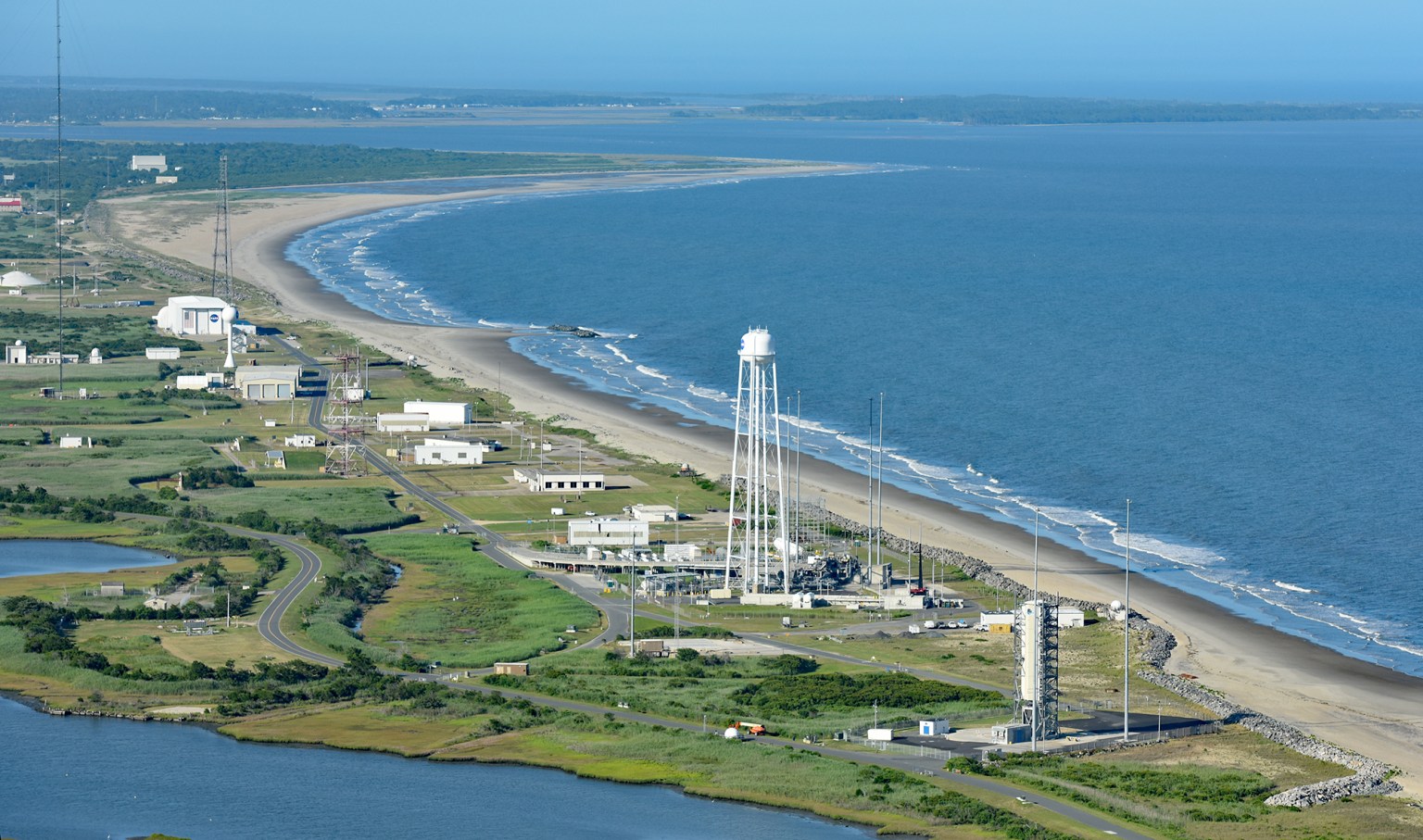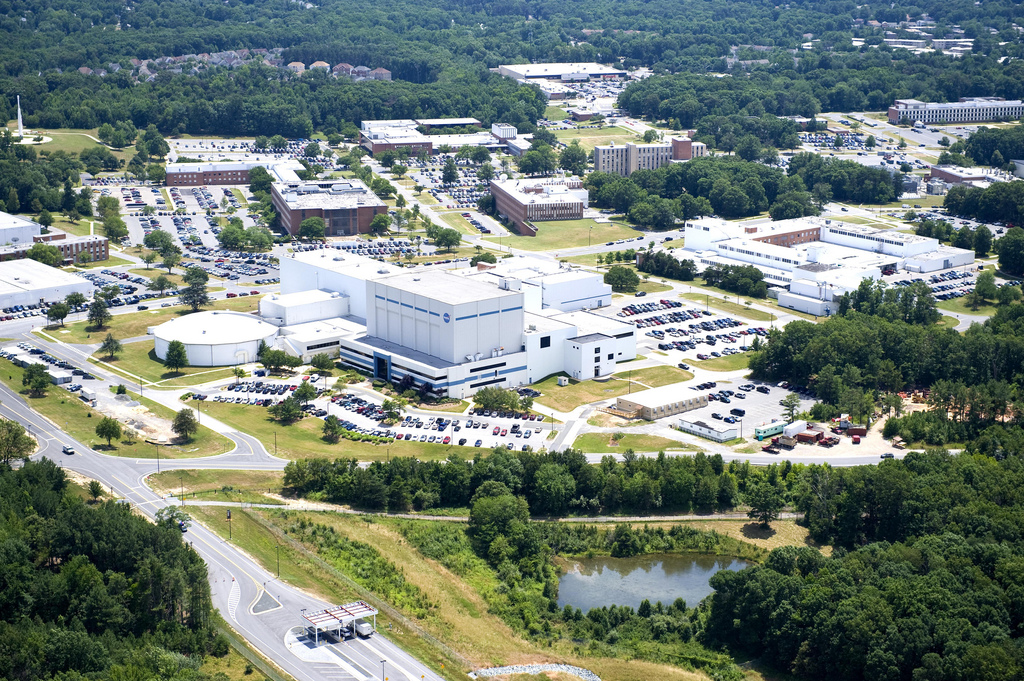BPO: Balloon Program Office – Based at Wallops Flight Facility in Wallops Island, Virginia, the NASA office in charge of scientific ballooning research and development for the agency.
Conventional ballooning – Missions that fly for short periods, from hours to a day or two.
CSBF: Columbia Scientific Balloon Facility – a NASA-sponsored facility in Palestine, Texas, which launches many of the agency’s large, unmanned, high-altitude research balloons.
Flight ladder – Part of the flight train. It is a set of steel cables with cross braces that is placed above the payload and below the parachute. It is used to provide space between the balloon and the payload.
Flight termination – At the end of a flight when the objectives of the mission have been met, the decision to end or “terminate” is made. When the balloon system is over an area that is safe for ending the flight, a command is sent to the balloon system to separate the payload from the balloon. The payload has a parachute attached to it. The payload floats on the parachute to the ground. When the payload and parachute system separates from the balloon, a large hole is ripped in the balloon and the helium escapes. The balloon then falls back down to Earth. Both the balloon and the payload are recovered.
Flight train – Part of the balloon made up of the parachute and ladder.
HASP: High Altitude Student Platform – The HASP platform can support eight small payloads of ~3 kg weight and four large payloads of ~20 kg weight (i.e. 12 experiment “seats”). A standard interface is provided for each student payload that includes power, serial telemetry, discrete commands and analog output. More about HASP.
The HASP project has been successful in providing access to near-space for science and engineering payloads developed by undergraduate and graduate students from across the country. More about the HASP project.
LOS: Line of sight communication – A direct communication link between the balloon support instrument and the ground; it is available when the balloon is still above the horizon.
LDB: Long-duration ballooning – Missions that use either existing balloons in locations where the balloon is in constant daylight, or will use a new balloon design that is intended to achieve durations of 100 days or longer at mid-latitudes. The long-duration flights in constant daylight are currently flown from Antarctica and Sweden. The super pressure balloon system that may fly up to 100 days is currently under development.
Payload – The science instrument that the balloon lifts to the stratosphere; it could be a telescope or other instrument. Some facts about payloads:
- Balloon payloads study the origins of the universe, cosmic rays, supernovae, black holes, dark matter, dark energy and other space phenomena. Balloons can also support in situ measurements for Earth and planetary science
- Since the payloads are typically hung under the balloon, the size and dimensions are not too constrained. That is one of the advantages of using balloons for scientific investigations.
- The science payload can be as heavy as 6,000 lbs.
Piggyback payload – Typically small instruments that fly on another balloon flight. They are typically small innovative instruments and do not require all of the support a full scientific instrument payload may need. They can be added to an existing flight with little added weight or power requirements. It is an advantage that balloon flights can accommodate these small cutting-edge technology development instruments and give them turnaround flight opportunities.
Scientific balloon – Very large inflated structure that carries scientific instruments to the edge of space to conduct scientific investigations. Scientific Balloons Fact Sheet
SPB: Super-pressure balloon – Made with a non-extensible material and is a closed system to prevent gas release. By the time float altitude is achieved, the free-lift gas has converted into super pressure. Variations in the radiation environment produce changes in the super pressure, but not in the balloon volume, therefore the balloon continues to float at the same density altitude. As long as the balloon is super-pressured, it will continue to float at a constant density altitude. This type of balloon will play an important role in providing inexpensive access to the near-space environment for science and technology. It will offer ultra-long duration missions on the order of 100 days or more at mid-latitudes. SPB will also offer greater stability at float altitude with minimal altitude excursion during the day/night cycles when compared to that experienced on Zero-Pressure (ZP) balloons. This added stability and extended durations at mid-latitudes will enable new science missions that currently are not feasible with ZP balloons. Therefore, balloon-borne telescopes, operating in the regions of the spectrum – namely X-rays and rays that can’t be studied as effectively at the poles because of the strong background of charged cosmic rays funneled in by Earth’s magnetic field, will be enabled to venture into new science and discovery missions on-board a super pressure balloons. More about SPBs.
Support instrument – A critical part for mission success, it has multiple functions; it provides power to the science payload and all vital systems, stores power from solar panels, provides communication to/from the ground via satellites or line of sight, stores data on board, as well as other important functions. The support instrument can weigh as much as 2,000 lbs.
ULDB: Ultra-long Duration Balloon– Made of advanced materials and uses a new pumpkin-shaped balloon design to achieve durations of up to 100 days. The super-pressure pumpkin balloon has been designed to increase flight durations up to one hundred days. This new balloon will significantly increase the amount of data that can be collected in one balloon mission.
WASP: Wallops Arc Second Pointer – A NASA-provided support system which can point telescopes on balloon gondolas at inertial targets with arc-second accuracy. WASP is intended to be a flexible system that can be used to support a variety of science-provided instruments and sensors to meet specific mission performance requirements. Major components of WASP are reusable which reduces the overall costs to the BPO and to users. More about WASP.
ZP: Zero-pressure balloon – Currently the balloons most used for conventional and LDB missions; carries the scientific instrument to a density altitude that is determined by the total mass of the system (suspended mass + balloon mass) divided by the fully inflated balloon volume. The balloon is only partially filled at time of launch and expands to its full volume as the balloon approaches its float altitude. NASA currently uses helium as the lifting gas. Has openings to the atmosphere, called vent ducts, to release the excess gas called free-lift, which provides the lifting force during ascent. The balloon continues to float at its equilibrium-density altitude until there is a change in the radiation environment, such as sunrise/sunset, upwelling earth flux, etc. At sunset, the gas cools, the volume decreases, and the balloon descends (about 30,000-50,000 feet) to a lower equilibrium altitude based on atmospheric lapse rates and the radiation environment. Altitude can be maintained by the reduction in total system mass through release of ballast, which nominally amounts to about 8 percent per day. Flights thereby are limited by the total available mass that can be used as ballast.





























